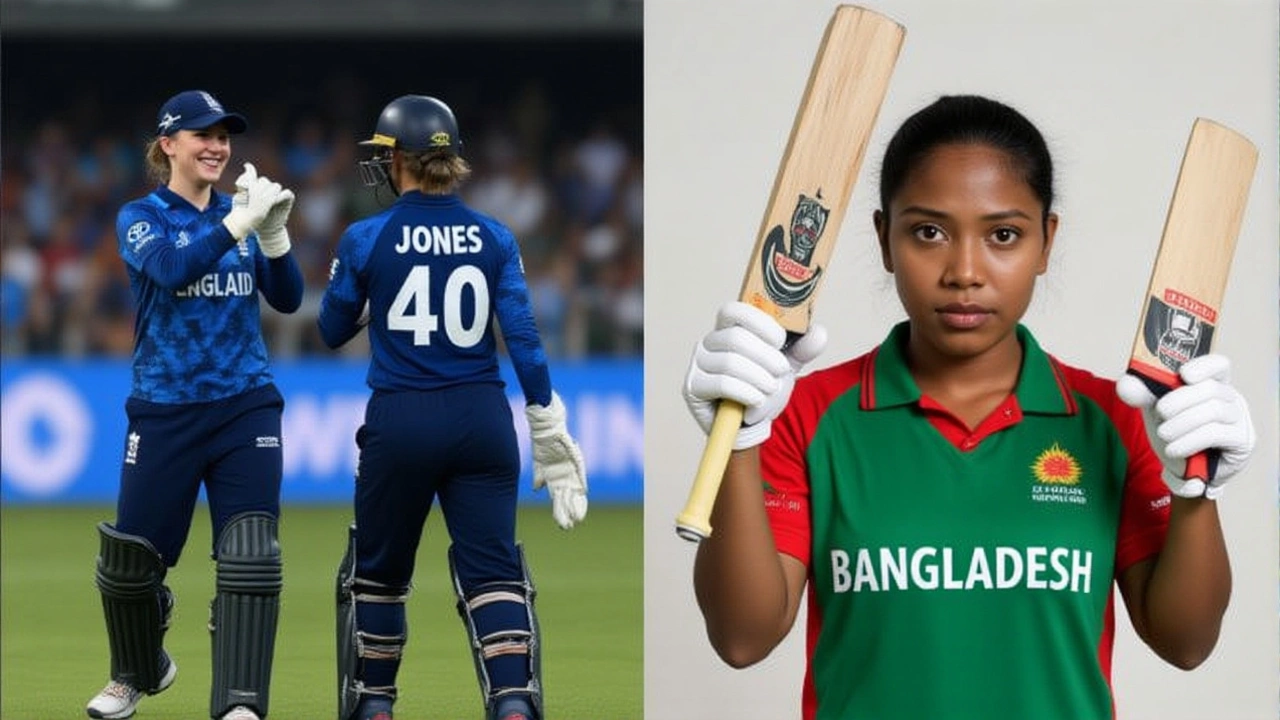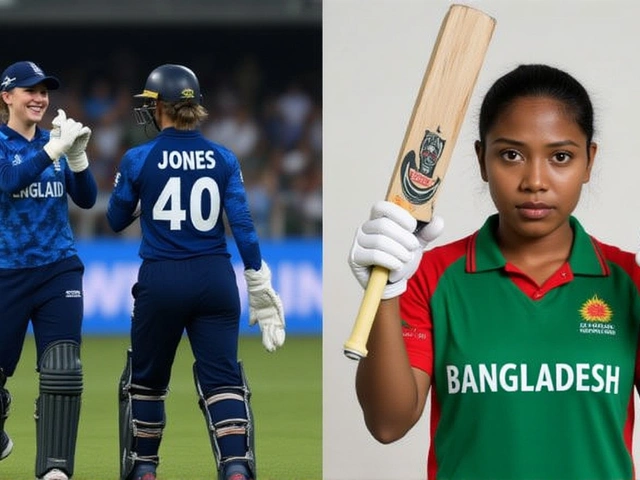
When Heather Knight, captain of England Women's cricket team guided her side to a four‑wicket win with 23 balls to spare, the stadium buzzed with relief and admiration. The showdown unfolded at Barsapara Cricket Stadium in Guwahati on Tuesday, 7 October 2025, as part of the Women's ODI World Cup 2025various venues across India. England posted 178/6, with Knight’s unbeaten 79 anchoring the chase after a wobble at 78/4. Bangladesh Women, fresh off a historic win over Pakistan, proved to be the tournament’s toughest test yet.
Match Overview
Bangladesh won the toss and elected to bat, a decision that paid off early as they rattled the English bowlers for quick runs. By the 13th over, they were 93/2, thanks to solid contributions from opener Rubya Haider (45) and middle‑order stability from Nigar Sultana Joty (28). Their total of 174 was defended, but not without drama. England’s chase sputtered at 78/4, leaving them 101 runs shy with only two wickets in hand. At that point, it looked like the match could swing either way.
Key Performances
Knight’s innings was a masterclass in patience and power. She struck eight fours and a six, rotating the strike while waiting for loose deliveries. Her partnership with Alice Capsey (31*) added 85 runs for the sixth wicket, sealing the win. Meanwhile, Bangladesh’s leading bowler Fahima Khatun claimed three wickets, including the early dismissal of Emma Lamb for just a single run. Khatun’s spell of 2/32 in nine overs kept the English tail from running away.
The fielding side also produced moments worth noting. Nahida Akter completed a spectacular catch off Lamb’s attempted loft, with the third‑umpire confirming a clean grab. Bangladesh’s all‑rounder Rabeya Khan bowled a tidy 4‑1‑18‑0, building pressure by conceding just 0.75 runs per ball.
Bangladesh's Road to Guwahati
Before facing the defending champions, Bangladesh entered the tournament on a high. Their 7‑wicket romp over Pakistan in Colombo was only the second ODI World Cup win in the nation’s history. The Pakistani side was bundled out for 129 in just 38.3 overs, a collapse sparked by Shorna Akter’s miserly 3‑3‑5‑3 spell. Rubya Haider’s unbeaten 57 chased down the tally in 32 overs, cementing Bangladesh’s reputation as a rising force.
That confidence carried into the Guwahati match, where the team’s bowlers kept England’s run‑rate well under 6 per over for much of the innings. However, the relentless pressure from Knight and Capsey proved too much once the partnership clicked.
Reactions and Implications
Post‑match, England Women's cricket team coach Jon Lewis praised his side’s resilience: “We survived a scare that could have turned the tournament on its head. The girls showed great character, especially Heather who kept her cool under pressure.”
Bangladesh’s captain, Nigar Sultana Joty, admitted disappointment but remained optimistic: “We gave them a real fight. The experience against a four‑time champion will only make us stronger for the next round.”
The International Cricket Council (ICC) described the encounter as a “hard‑fought tussle” and highlighted it as one of the tournament’s most competitive fixtures to date. With England now sitting atop Group A, a win keeps their title defence alive, while Bangladesh will need to regroup quickly for the upcoming Super Six stage.
Looking Ahead
England’s next challenge comes against Sri Lanka Women on 10 October 2025 at the same venue. If Knight and Capsey can replicate their partnership, England should cruise into the quarter‑finals. Bangladesh, meanwhile, faces South Africa Women on 11 October 2025 in Colombo. Their bowlers will have to exact early breakthroughs if they hope to pull off an upset.
Statistically, England’s chase rank among the top five most efficient pursuits in World Cup history, with a run‑rate of 7.90 after the 78/4 slump. Bangladesh’s bowling economy of 3.56 across the match also sits favorably compared to the tournament average of 4.28, indicating that the gap between the two sides may be narrower than the scoreboard suggests.
Historical Context
England Women have claimed the ODI World Cup title four times (1973, 1993, 2009, 2017) and are the only side to win back‑to‑back titles in 2017‑2022. Their consistency stems from a deep talent pool and a professional domestic structure that feeds the national side. Bangladesh, on the other hand, entered ODI World Cups only in 2014 and have yet to advance past the group stage. Their recent victories over Pakistan hint at a shifting balance in women’s cricket, especially in the sub‑continent where investment in the women's game is accelerating.
Overall, the Guwahati clash underscored how quickly fortunes can swing in limited‑overs cricket and reminded fans that every wicket matters when the chasers are on the brink.
Frequently Asked Questions
How does England's win affect their standing in the World Cup?
The victory puts England at the top of Group A with four points, guaranteeing a spot in the Super Six stage and keeping their unbeaten run intact.
What were the key moments that turned the match in England's favour?
The turning point was the 85‑run partnership between Heather Knight and Alice Capsey after England were 78/4. Their steady accumulation erased the required 101 runs and shifted momentum.
Why was Bangladesh's performance considered impressive despite the loss?
Bangladesh restricted England to 178/6, challenging a four‑time champion and creating a high‑pressure scenario at 78/4. Their bowlers kept the run‑rate low and forced England into a tight chase.
What does this result mean for Bangladesh's upcoming matches?
Bangladesh must regroup quickly for their Super Six encounter with South Africa. The experience gained against England will be valuable, especially in handling pressure situations.
Who were the standout players of the match?
Heather Knight (79*), Alice Capsey (31*), and Bangladesh’s Fahima Khatun (3/32) were the top performers, each influencing the game's outcome with crucial contributions.


